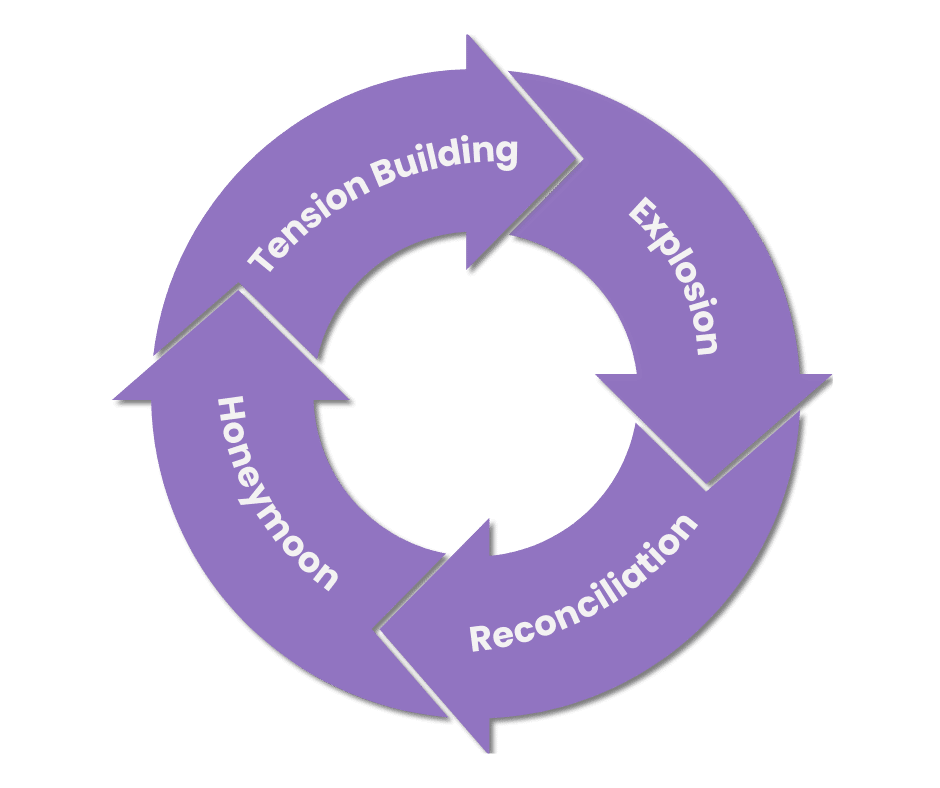Do you ever wonder why a victim doesn’t just leave their abuser? If they’re experiencing abuse, why don’t they just ask for help or leave? When we think about these questions with an informed understanding of domestic violence, the answer becomes clear—what may seem like simple solutions to us, often feel impossible. The cycle of abuse explains why it often takes a victim an average of seven times to leave a situation permanently.
There are four stages to the cycle of abuse.
- Tension building
During the tension-building phase, the abuser gets edgy and the stress of the situation builds. The victim may feel like they have to walk on eggs shells to not set their abuser off. The abuser might be extra sensitive, easily aggravated, isolating, and quick to put down the victim.
- Explosion
During the explosion phase, the abuser attempts to dominate the victim through an abusive tactic. This act could be any form of abuse such as physical, sexual, or verbal. The victim may try to protect themselves, reason or calm the situation, fight back, call the police, or leave.
- Reconciliation
During the reconciliation phase, the abuser may feel remorseful for the previous explosion. They might try to reconcile with their victim and convince them they are sorry. The victim often experiences pain, humiliation, and fear. They might begin to doubt the severity of the situation and begin to believe their apology.
- Honeymoon
During the honeymoon phase, the abuser is kind and calm. They ask for forgiveness and claim that it will never happen again. They might try to justify their behavior by blaming substance abuse or situations outside of the relationship. They might cry or even threaten suicide to show how remorseful they are. The victim often wants this change enough to be convinced they are telling the truth. They might drop legal proceedings, agree to stay with the abuser, show forgiveness, and even feel happy.
The honeymoon phase is not the end of the story. As cycles do, the abuse continues on and on until something comes in to disrupt it. It is easy to see why a victim might not feel like they can ask for help or leave their situation. There are also many other contributing factors. Children are often involved or the victim might not be able to financially support themselves and have no one to turn to. Every victim’s story is extremely complex and unique. Leaving an abusive situation is not always as simple as it may seem.
Read More


